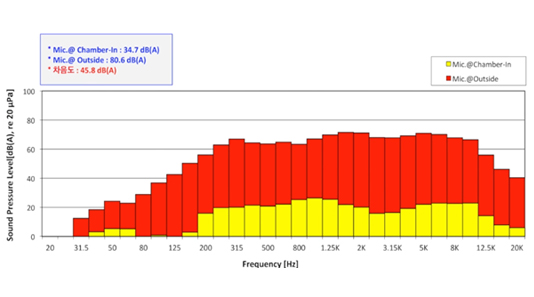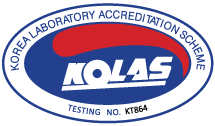Hardware
- Vibration & force compensator for structures and diesel engines
- CMS for ships and offshore structures
- Acoustic Enclosure for Marine Diesel Generator
- RAC Acoustic Chamber
Vibration & force compensator for structures and diesel engines
Vibration & force compensators are devices installed on diesel engines to reduce guide force X-/H-moments and 2nd order unbalanced moment generated from the engines. Also, this device can be installed on structures directly to decrease the longitudinal and transverse vibration level or to reduce excitation force caused by the engine or the propeller on the structures.
According to the way of control, there are two types of compensators; one is the active type and the other is the semi-active type. The active type’s compensator operate continuously to browse the optimal control phase with receiving real-time vibration signal and the semi-active type can reduce vibration or force according to the optimal control phase already inputted.
The strongest advantage of our compensator is the patented conditional operation, which detects engine speed and automatically operates only for the pre-specified engine speed ranges. The unique function can save operation and maintenance cost of the compensator. Moreover, our product has a function to find out the optimum control phase and force through only 1 trial operation within 3 minutes by using advanced automatic searching algorithm; other products generally consume at least one hour because the trial & error method is applied to conduct the procedure.
-
Installed vibration compensator on 5,500TEU Containership D/H
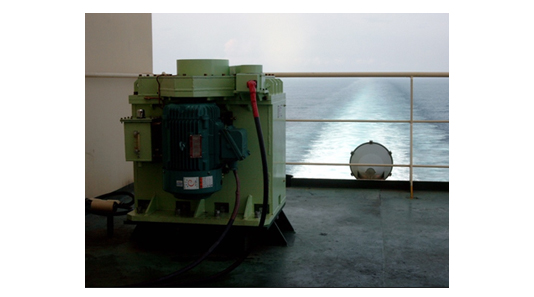
-
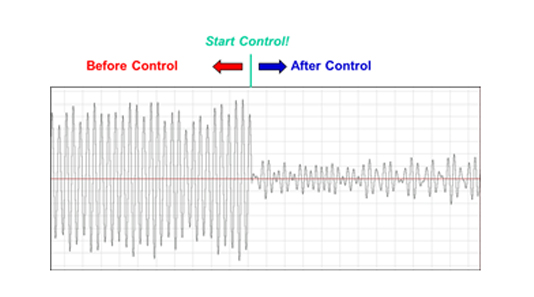
CMS (Condition Monitoring System) for ships and offshore structures
CMS is a monitoring system of structure and machinery to diagnose their condition and to give notice of their potential or existing malfunction and damage in advance.
Our CMS can acquire and save electric signals converted from physical vibration, stress and others in real time up to of hundreds channels. Moreover, our CMS can conduct frequency analysis, trend analysis and diagnosis analysis. These analyses can let workers know when any malfunction or damage will occur and what the main reason will be for the abnormal conditions. Also, the CMS is constructed to transmit the signal information of the particular machine or the entire monitored information to land experts for performing the precise failure diagnosis. In addition, the CMS functions can be customized if clients request.
Key features of CMS
- Input function of analog voltage- and current-based sensor signal (Ex. accelerometers, strain gauge and tachometer, etc.)
- Simultaneous signal acquisition up to 200 channels
- FFT analysis up to 1kHz with 0.1 Hz resolution for 200 channels
- DAQ setup and data collection functions using TCP / IP communication
- Results of 1hour periodic real-time / diagnosis / analysis and function of constructing alarm / peak signal auto log-based database
- Status monitoring of hull and machinery based on threshold value in respect of warning / alarm level
- Prediction function of hour to threshold value through an trend analysis
- Evaluation functions of rain flow counting histogram and damage rate for hull stress signal
- Display function of monitoring status in each channel provided with drawings and detailed status / statistical information
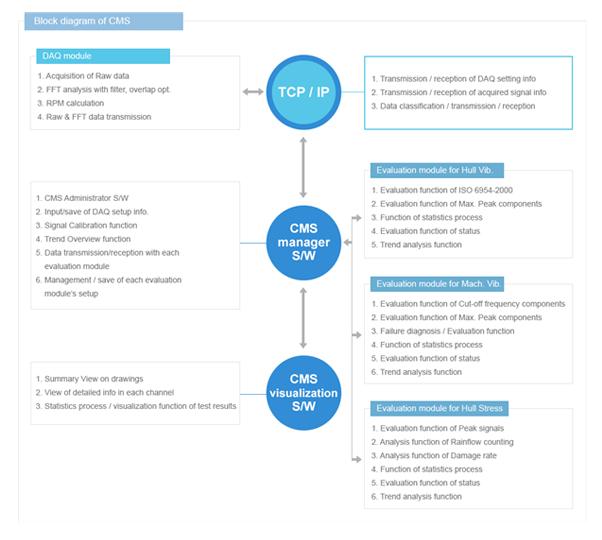
Acoustic Enclosure for Marine Diesel Generator(Collaborated with D/G manufacture, HAEIN)
- To protect the seafarer from excessive noise levels which may give rise to a noise-induced hearing loss
- Need a proper noise countermeasure of Diesel Generator
- Selection of proper solutions to meet the requested noise criteria(NABS Foam, Rubber mount, Base frame design etc.)
- Noise prediction and design considering sound propagation
- Resonance mode analysis of Enclosure
- Calculation of required ventilation air to select optimum ventilation fan
- tablishment of optimum design process for Enclosure
- - 80 dB(A) 1m distance from D/G set
- - Acoustic material (NABS Foam, 75mm)
- - Rubber mount for reduced structure-borne noise
- - LED Lighting
-
Acoustic Enclosure for D/G sets
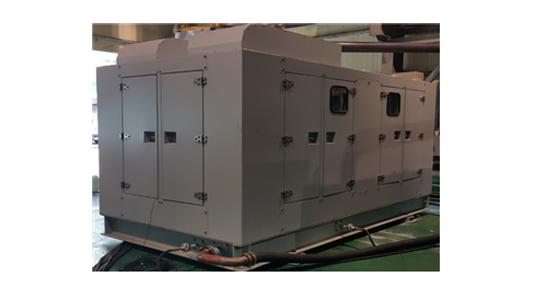
-
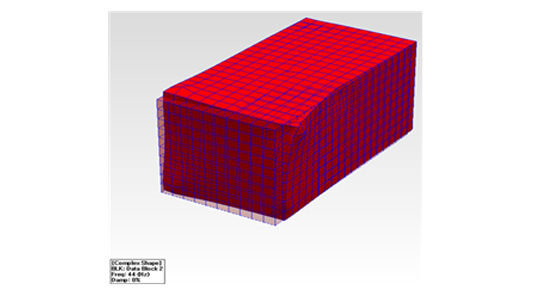
-
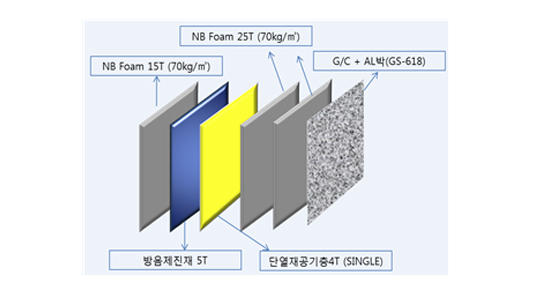
-
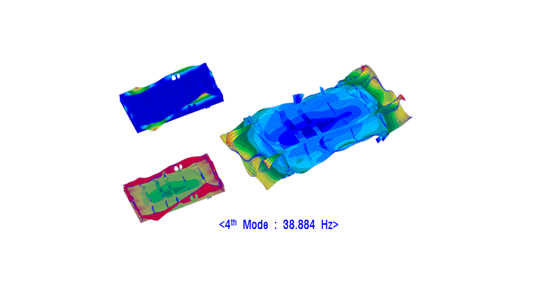
-
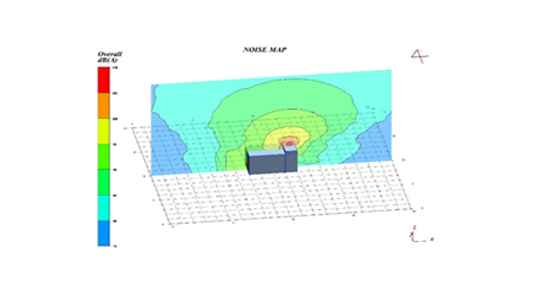
-
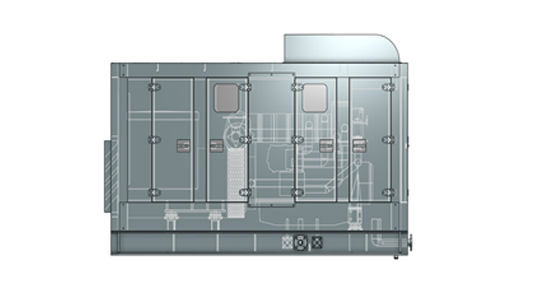
RAC Acoustic Chamber(Collaborated with *RAC manufacture, SAMSUNG Electronics)
- Design and manufacture of acoustic chamber for RAC’s automation noise inspection
- Selection of proper solutions to meet the requested noise criteria
- - Window type : triplex laminated glass
- - Seal type : silicone foam gasket
- - Door type : automatic sliding door (vertical type)
- Development of automatic sliding door considering noise performance & convenience
- Automatic control PLC system considering a safety inspection
-
Acoustic Chamber for RAC
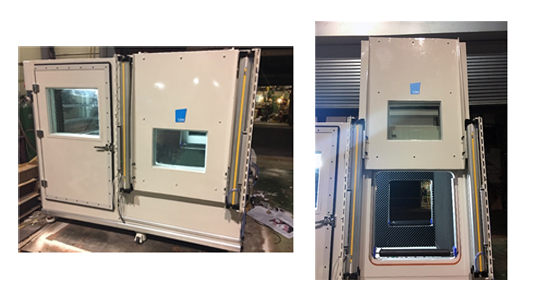
-
Manufacturing Production process
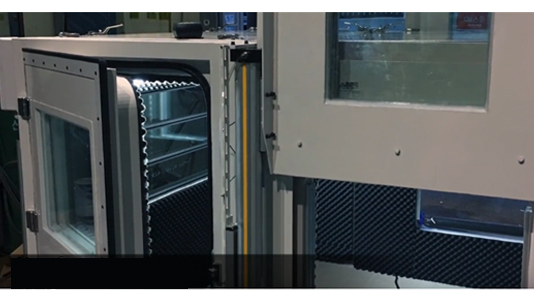
-
Measurement of sound insulation
performance using non-directional speaker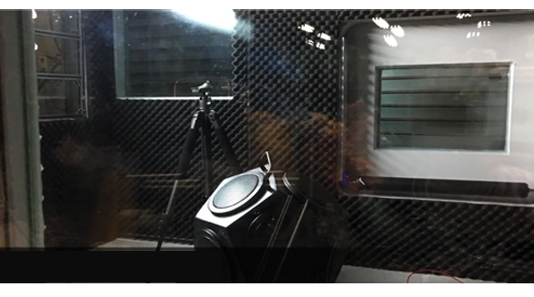
-
Manufacturing Production process
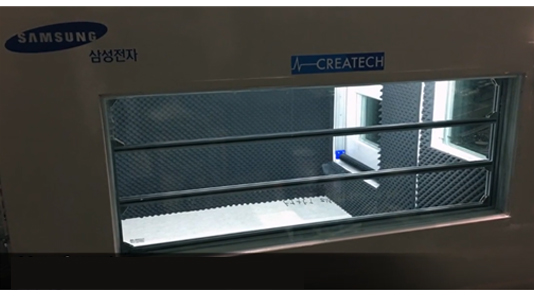
-
Sound insulation level: 45.8 dB (A)
